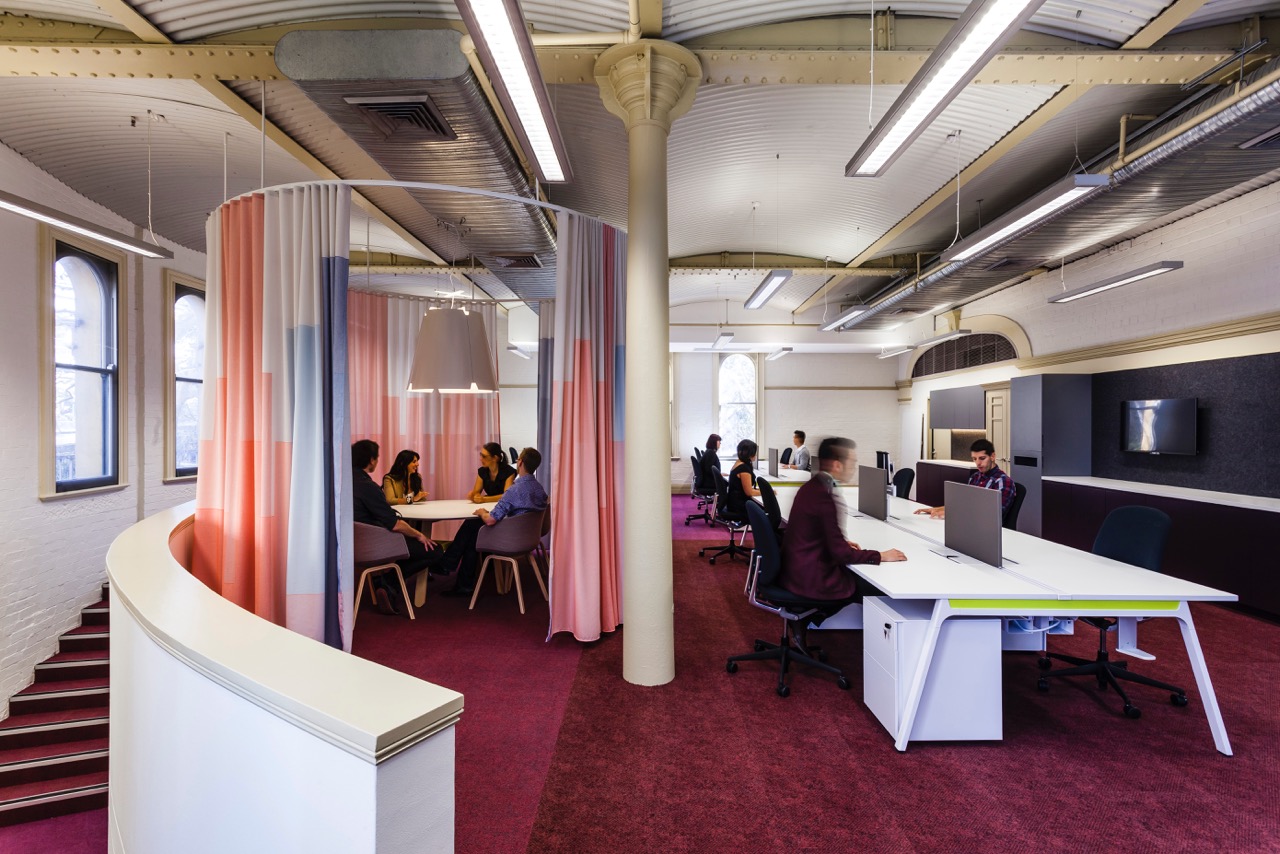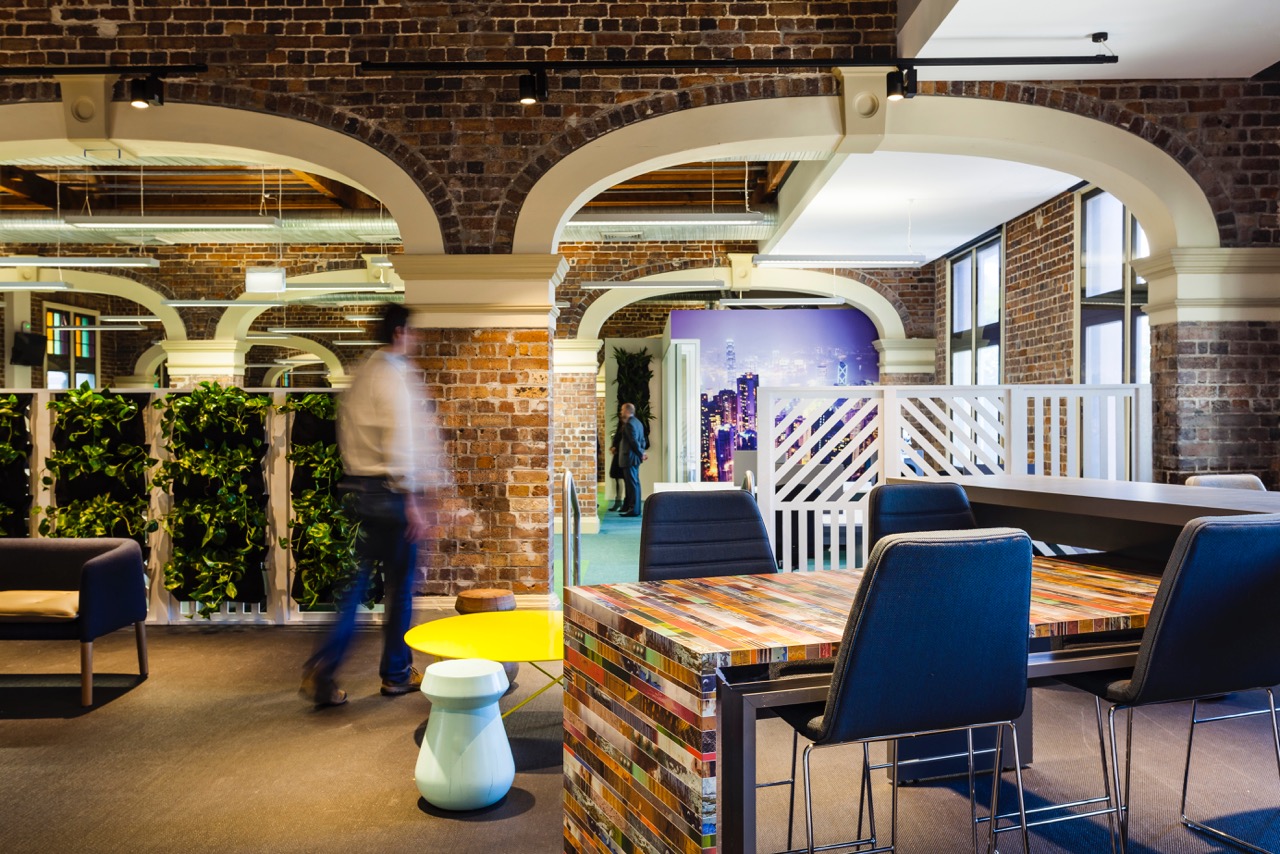Photograph: Robert Walsh
Workplace design is no longer taking its lead from corporate offices, instead it’s flexible, people-friendly co-working spaces that are dictating future trends. Gone are beige fittings, isolating cubicles and hushed formality. Here to stay are open spaces, creative colours and shapes as well as green features.
Angela Ferguson, MD of workplace design firm Futurespace, says Australia’s relatively young architecture and rebel spirit allows it to be more creative.
“In Europe you have buildings that are thousands of years old, but Australia doesn’t have a legacy of architecture that inhibits how we design. We also have a lack of regard for authority, we’re comfortable challenging the norm and are open to new ideas. This is why office design is really cutting edge here, because we’re keen to embrace new ideas, to explore and experiment,” Ferguson says.

Over the past decade the key trend Futurespace has seen is that workplaces are fragmenting: there’s been a redefinition of the workplace. They’re no longer solely for business but also socialising at work and including innovative spaces. Angela Ferguson recently travelled to San Francisco and Canada, and found both countries playing catch-up.
“Even in San Francisco with a lot of tech spaces and big tech companies, they’re probably about ten years behind in terms of the cutting edge stuff we’re seeing in Australia. We’re very good at the Uberisation of space, which includes co-working and things like agile working. In San Francisco they’re just starting to have everyone in open plan, and grappling with what that means from a noise and privacy point of view,” Ferguson explains.
Ivan Lim, co-founder of furniture and e-commerce platform Brosa, says that tech companies and startups are influencing office design and workplace interaction.
“They are leading the way. The theory is that your office spaces need to flow in order to ignite collaboration and innovation – long gone are the days of the cubicle and grey carpet tiles. Spaces are designed so that employees should feel good about coming to work – engaging work spaces create engaged employees,” Lim says.
Futurespace identifies several current design trends. Its clients want more bespoke, branded environments. “Brand personality” is very important. Fintechs often want to emulate Google but tend to be a bit more formal. So designers ask each client what makes them unique as a business, and how this can be brought into the workplace.
Another trend is “bringing the outdoors in” through planting and greenery, a culturally the outdoors is very important to Australians, who love outdoor life.
“Green walls are on the up, but like videoconferencing, installations are getting smarter and more agile. The Google Australia green wall that Futurespace designed had lots of technology behind it, such as its own plumbing system. But there are also a lot of ways to incorporate similar elements if clients can’t afford a whole green wall: for example potted plants in vertical walls, which can be maintained by the plant lease company,” Ferguson says.
For Brosa, an area where employees can interact is key to the modern workplace. This doesn’t have to be the traditional table tennis table. It can be a place to share a meal or a casual meeting: at Brosa they have locally made Paul Clarke Tables in the kitchen and the rooftop terrace.
Australia’s multiculturalism has also encouraged more diversity in office design, according to Lim.
“Countries still have their own styles – however Australians like to dabble in a little of everything. We have a very diverse population and with that comes a want to purchase and live with products that come from all over the world. It is natural however for designers that are trained in a certain country to design and purchase what they have been accustomed to seeing. Often people are product of their surrounds, good design should be relevant in many different environments – that is where pan-Asian and even global trends come together.”


 Dr. Gleb Tsipursky – The Office Whisperer
Dr. Gleb Tsipursky – The Office Whisperer Nirit Cohen – WorkFutures
Nirit Cohen – WorkFutures Angela Howard – Culture Expert
Angela Howard – Culture Expert Drew Jones – Design & Innovation
Drew Jones – Design & Innovation Jonathan Price – CRE & Flex Expert
Jonathan Price – CRE & Flex Expert











